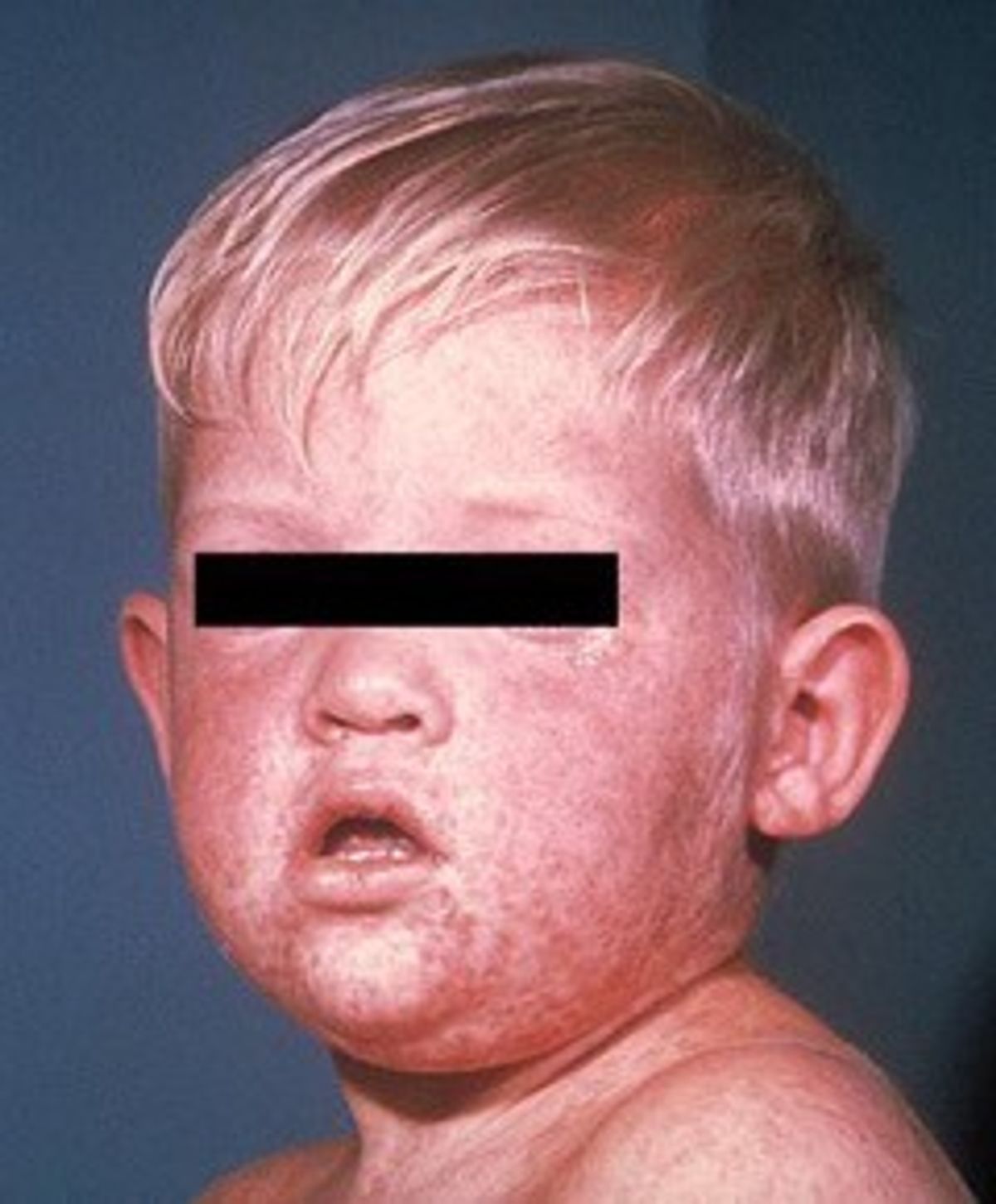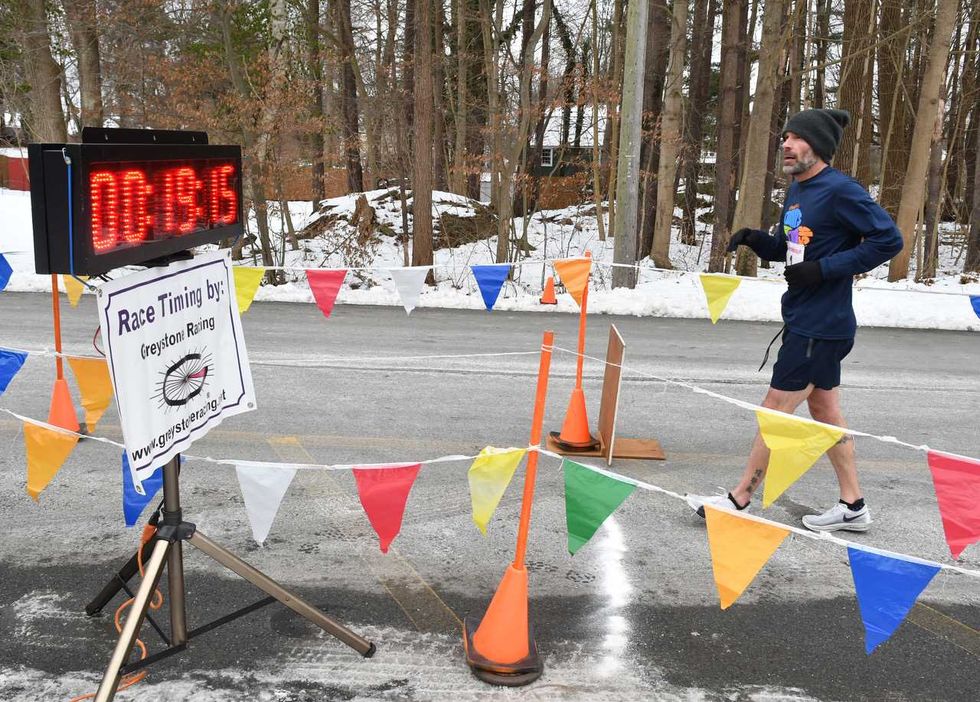Measles Again! But Why?

A case of measles with spots appearing on the face.
Provided

A case of measles with spots appearing on the face.
The measles vaccine was licensed in 1963. It is a live attenuated virus vaccine that provides lifelong protection with few side effects. It does not cause autism. The virus is extraordinarily contagious. The measles vaccine is usually given with mumps and rubella vaccines, and often with the chicken pox vaccine. With earlier vaccines for whooping cough, tetanus, and diphtheria, and in the 1950’s, polio, life for children and parents became less fearful.
But let’s go back to 1963, when every child in the United States and across the world got measles. It caused them true misery. There were about 600,000 cases in children in 1963.
People my age (old) will sometimes say, “I had measles, and it was no big deal, it was uncomfortable, and I had a fever, and all those spots scared my Mom, but I got over it.” This sort of extrapolation is dangerous because humans are not genetically identical, and our immune systems vary—for 20% children and their parents, measles was a very big deal; they had complications, usually encephalitis, an infection of the brain, pneumonia, or ear infections.
In 1963, about 120,000 children were hospitalized in the U.S., and about 400 died. Other estimates are higher.
Measles is a respiratory disease; we inhale virus particles, and they infect cells of the trachea and upper lung. They go on to infect immune cells, which carry the virus to all parts of the body, including the skin where the spots appear. Usually, the spots start in the scalp and then appear on the face, the trunk, and extremities in that order. It has an incubation period of weeks and takes some time to get over. Measles is common in other parts of the world; it is still a killer in Africa and Asia.
The measles virus is made of RNA, which differs slightly from DNA. Many other nasty viruses, including SARS-CoV-2, Ebola, and polio are made of RNA. Measles virus is about half the size of SARS-CoV-2, and only has six genes. The human genome is 3.2 billion nucleotides, a million times more that this virus. The virus is small, but potent. One of its powers is to defeat the defenses of an unvaccinated host.
We have two immune systems: innate and adaptive. The much older innate system is the first point of contact with a virus, and it has many tools to slow an infection, but only if it recognizes the virus RNA, its genetic material. The measles virus has incorporated into its tiny genome instructions to make an enzyme, or catalyst, called adenosine deaminase, which removes a nitrogen atom and a couple of hydrogens from adenosine components of the virus. That makes the virus invisible to the innate immune system but does not affect the ability of the virus to make thousands of copies of itself. The innate immune system has many tools to fight infections, but with measles the virus hides in plain sight.
Imagine an unvaccinated child with a case of measles. The child survives, but how long does impairment of the innate immune system last? Several years, it seems. The measles virus affects the antibodies that react against other diseases that the child has already survived.
Without that protection, old but latent infections—say hepatitis, can be reawakened and new virus infections become more dangerous. What measles research tells us goes beyond measles.
The measles virus evolved (perhaps a thousand years ago) from a cattle virus called Rinderpest, to which it remains similar. Rinderpest virus has been eliminated from cattle through vaccination. (The only other virus to be eliminated was smallpox). In 2000, the United States was sufficiently vaccinated that no cases of measles were recorded. The excellence of the vaccine and experience with Rinderpest led to the idea of eliminating the measles virus, but a decline in vaccine acceptance after a false autism scare, ended that hope. We now have periodic outbreaks of measles, usually from isolated communities. These cases are indicators that the public health system has deteriorated, often for ideological reasons, as is now the case in Florida. Think of measles infections as a harbinger, or to use a cliché, a canary in a coal mine.
The Florida health authorities are deluded. If for measles, what else? Perhaps mumps, rubella, and chickenpox.
Richard Kessin, PhD is Emeritus Professor of Pathology and Cell Biology at the Columbia University Irving Medical Center. Email: Richard.Kessin@gmail.com.
Runners line up at the starting line alongside Santa before the start of the 5th Annual North Canaan Santa Chase 5K on Saturday, Dec. 13.
NORTH CANAAN — Forty-eight runners braved frigid temperatures to participate in the 5th Annual North Canaan Santa Chase 5K Road Race on Saturday, Dec. 13.
Michael Mills, 45, of Goshen, led the pack with a time of 19 minutes, 15-seconds, averaging a 6:12-per-mile pace. Mills won the race for the third time and said he stays in shape by running with his daughter, a freshman at Lakeview High School in Litchfield.

Don Green, 64, of Red Hook, New York, was second among male runners with a time of 21:17 and a 6:52-per-mile pace. Becky Wilkinson, 47, of Southfield, Massachusetts, was the first woman to cross the finish line with a time of 22:16, averaging a 7:11-per-mile pace. Wilkinson finished fourth overall.
Margaret Banker, 52, of Lakeville, finished second among women runners with a time of 23:59 and a 7:44-per-mile pace.
Runners came from all over Connecticut, Massachusetts and New York. One runner listed home as London, England. Many were members of the Run 169 Towns Society, a group that is dedicated to completing races in every one of Connecticut’s 169 towns. Elizabeth Smith, 32, of Manchester, a member of Run 169, said this was her 162nd town.
“I started 10 years ago,” Smith said. Her husband, Daniel, 33, has run races in 73 Connecticut towns, now including North Canaan. He was eager to know where to get a good cup of coffee after the race.
Santa, who got a head start on the group of runners but finished next to last with a time of 44:14, has been a feature in the North Canaan race since it started five years ago.
The 5K proceeds from a start in front of the North Canaan Elementary School on Pease Street to course around the Town Hall parking lot, up West Main Street past the transfer station to the state line and back. Cheryl Ambrosi, 45, of Danbury, was the last to cross the finish line with her dog Benji. “It was so much fun,” she said as she ended, even though she didn’t catch Santa.

The Torrington Transfer Station, where the Northwest Resource Recovery Authority plans to expand operations using a $350,000 state grant.
TORRINGTON — The Northwest Resource Recovery Authority, a public entity formed this year to preserve municipal control over trash and recycling services in northwest Connecticut, has been awarded $350,000 in grant funds to develop and expand its operations.
The funding comes from the Department of Energy and Environmental Protection via its Sustainable Materials Management grant program. It is intended to help the NRRA establish operations at the Torrington Transfer Station as well as support regional education, transportation, hauler registration and partnerships with other authorities.
Founded by the City of Torrington in May 2025, the NRRA was established to oversee regional municipal solid waste management. Its creation followed a $3.25 million offer by USA Waste & Recycling to purchase the Torrington Transfer Station — a sale that would have privatized trash services in the region.
The proposed sale was initially approved by the MIRA Dissolution Authority, the entity responsible for dissolving the state’s former Materials Innovation and Recycling Authority, which owned the Transfer Station at the time. Before the transaction could close, the state intervened and directed that the facility’s operating permit be assigned to the NRRA to preserve a publicly controlled alternative.
MIRA has since dissolved, and the Transfer Station is currently operated by the state Department of Administrative Services. Many towns in northwest Connecticut have expressed interest in joining the NRRA. As of December, Torrington and Goshen were the only two municipalities in the authority.
At the Dec. 11 meeting of the Northwest Hills Council of Governments (COG) — a regional planning body representing 21 municipalities in northwest Connecticut — Director of Community and Economic Development Rista Malanca encouraged more towns to sign on.
“We need towns to join the Northwest Resource Recovery Authority to show your support, show this is what you want to do,” Malanca said.
Salisbury First Selectman Curtis Rand said his municipality is planning a town meeting in January to vote on a resolution to join the NRRA. Cornwall’s Board of Selectmen recently discussed scheduling a town meeting in the winter for the same purpose. Sharon, Falls Village and North Canaan have also expressed continued interest in pursuing a public option.
Kent is the northernmost member of the Housatonic Resource Recovery Authority, a regional solid waste authority representing 14 municipalities stretching south to Ridgefield. COG towns expressed interest in joining HRRA in 2024, but they were denied and set out to develop the NRRA.
“We also have been having conversations with the Capital Region Council of Governments and the Naugatuck Valley Council of Governments to think about how we can use existing resources, maybe some of these grant funds, to bring in shared resources or shared staffing that will help with some of the recycling coordinating efforts,” Malanca said.
With grant funds secured, NRRA aims to grow to a point that it can take over operations at Torrington Transfer Station to serve as a regional hauling hub. What happens to the trash after that has yet to be determined. Currently, it is being shipped to a landfill out of state. The existing municipal refuse hauling contracts that were established with the state expire in 2027.
The Salisbury Winter Sports Association (SWSA) will host its annual Junior Jump Camp, a two-day introduction to ski jumping, on Saturday and Sunday, Dec. 27 and 28, from 9 a.m. to 2 p.m. at Satre Hill in Salisbury.
The camp is open to children ages 7 and up and focuses on teaching the basics of ski jumping, with an emphasis on safety, balance and control, using SWSA’s smallest hill. No prior experience is required.
The cost is $50 per child and includes instruction and lunch on both days. For more information or to register, visit www.skireg.com/swsa-camp or email info@jumpfest.org
Jesse Bunce, first selectman of North Canaan.
LITCHFIELD — The Northwest Hills Council of Governments welcomed six newly elected municipal leaders Thursday, Dec. 11, at its first meeting following the 2025 municipal elections.
The council — a regional planning body representing 21 towns in northwest Connecticut — coordinates transportation, emergency planning, housing, economic development and other shared municipal services.
Barkhamsted First Selectman Meaghan Cook, Goshen First Selectman Seth Breakell, Kent First Selectman Eric Epstein, Norfolk First Selectman Henry Tirrell, North Canaan First Selectman Jesse Bunce and Torrington Mayor Molly Spino were each elected to their post in November.
They filled the seats of their predecessors on the COG, who were each given a toast of appreciation: Nick Lukiwsky (Barkhamsted), Todd Carusillo (Goshen), Marty Lindenmeyer (Kent), Matt Riiska (Norfolk), Brian Ohler (North Canaan) and Elinor Carbone (Torrington).
COG Executive Director Rob Phillips said the outgoing members were given a going away mug that read “You’re living the dream still.” Members voted to appoint Warren First Selectman Greg LaCava to fill a vacancy on the Council’s Executive Committee. COG members voted by paper ballot, and LaCava defeated Burlington First Selectman Doug Thompson for the vacant seat.